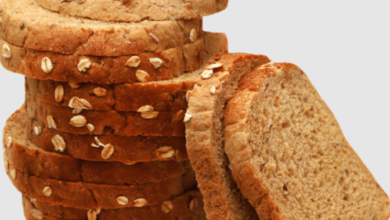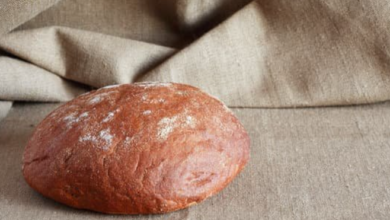What’S The Difference Between, Rye Bread Vs Pumpernickel Bread? Read This To Find Out!
What To Know
- Rye bread is made from a combination of rye flour and wheat flour, with rye flour being the dominant ingredient.
- If you enjoy a slightly sour and tangy flavor with a soft texture, rye bread is an excellent choice.
- If you prefer a more intense sour flavor with a coarser texture, pumpernickel bread is the way to go.
In the realm of bread, rye and pumpernickel stand as two distinct and flavorful choices. While both share a common ancestry, they differ in their composition, taste, and nutritional profiles. This blog post delves into the fascinating world of rye bread vs pumpernickel bread, exploring their unique characteristics and helping you make an informed decision about which bread to choose for your next culinary adventure.
Origin and History
Rye bread, as the name suggests, is made primarily from rye flour. Rye has been cultivated for centuries, originating in Central Asia. It was widely used in Europe, particularly in Eastern Europe, where it became a staple food. Pumpernickel bread, on the other hand, has a more specific origin. It originated in Germany, particularly in the Westphalia region. The name “pumpernickel” is thought to derive from the German phrase “pumpen,” meaning “to fart,” and “nickel,” a mischievous spirit. This playful etymology hints at the bread’s distinctive sour flavor.
Composition and Ingredients
The primary difference between rye bread and pumpernickel bread lies in their composition. Rye bread is made from a combination of rye flour and wheat flour, with rye flour being the dominant ingredient. Pumpernickel bread, in contrast, uses a higher proportion of rye flour, often 100%. Additionally, pumpernickel bread typically includes a blend of whole rye kernels, giving it a coarser texture.
Flavor Profile
Rye bread and pumpernickel bread exhibit distinct flavor profiles. Rye bread has a slightly sour and tangy flavor, attributed to the presence of lactic acid bacteria during fermentation. The sourness can vary depending on the type of rye flour used and the fermentation time. Pumpernickel bread, with its higher rye content, has a more intense sour flavor, often described as earthy and slightly bitter. The inclusion of whole rye kernels adds a nutty and chewy texture.
Nutritional Profile
Both rye bread and pumpernickel bread offer nutritional benefits. They are good sources of dietary fiber, which supports digestive health. Rye bread is particularly rich in soluble fiber, which can help lower cholesterol levels. Pumpernickel bread, due to its higher rye content, has a higher fiber content overall. Additionally, both breads contain essential vitamins and minerals, including B vitamins, iron, and magnesium.
Health Benefits
The high fiber content of rye bread and pumpernickel bread contributes to their potential health benefits. Fiber promotes satiety, helping you feel fuller for longer and potentially aiding in weight management. The soluble fiber in rye bread may also have cholesterol-lowering effects. Furthermore, the presence of B vitamins supports energy metabolism and nervous system function.
Culinary Applications
Rye bread and pumpernickel bread have versatile culinary applications. Rye bread is commonly used for sandwiches, open-faced sandwiches, and toast. Its slightly sour flavor pairs well with savory fillings, such as cheese, meats, and vegetables. Pumpernickel bread, with its more intense flavor, is often used for open-faced sandwiches and as a base for canapés. Its earthy and nutty notes complement rich toppings, such as smoked salmon, cream cheese, and caviar.
Final Thoughts: A Matter of Taste and Preference
The choice between rye bread and pumpernickel bread ultimately comes down to personal taste and preference. If you enjoy a slightly sour and tangy flavor with a soft texture, rye bread is an excellent choice. If you prefer a more intense sour flavor with a coarser texture, pumpernickel bread is the way to go. Both breads offer nutritional benefits and can be incorporated into various culinary creations.
Answers to Your Questions
Q: Which bread has a higher fiber content?
A: Pumpernickel bread has a higher fiber content due to its higher rye content.
Q: Can I substitute rye bread for pumpernickel bread in recipes?
A: While the two breads have similar textures, they differ in flavor. Substituting rye bread for pumpernickel bread may alter the overall taste of the dish.
Q: How can I store rye bread and pumpernickel bread?
A: Both breads should be stored in an airtight container at room temperature for up to 3 days. For longer storage, they can be frozen for up to 2 months.


